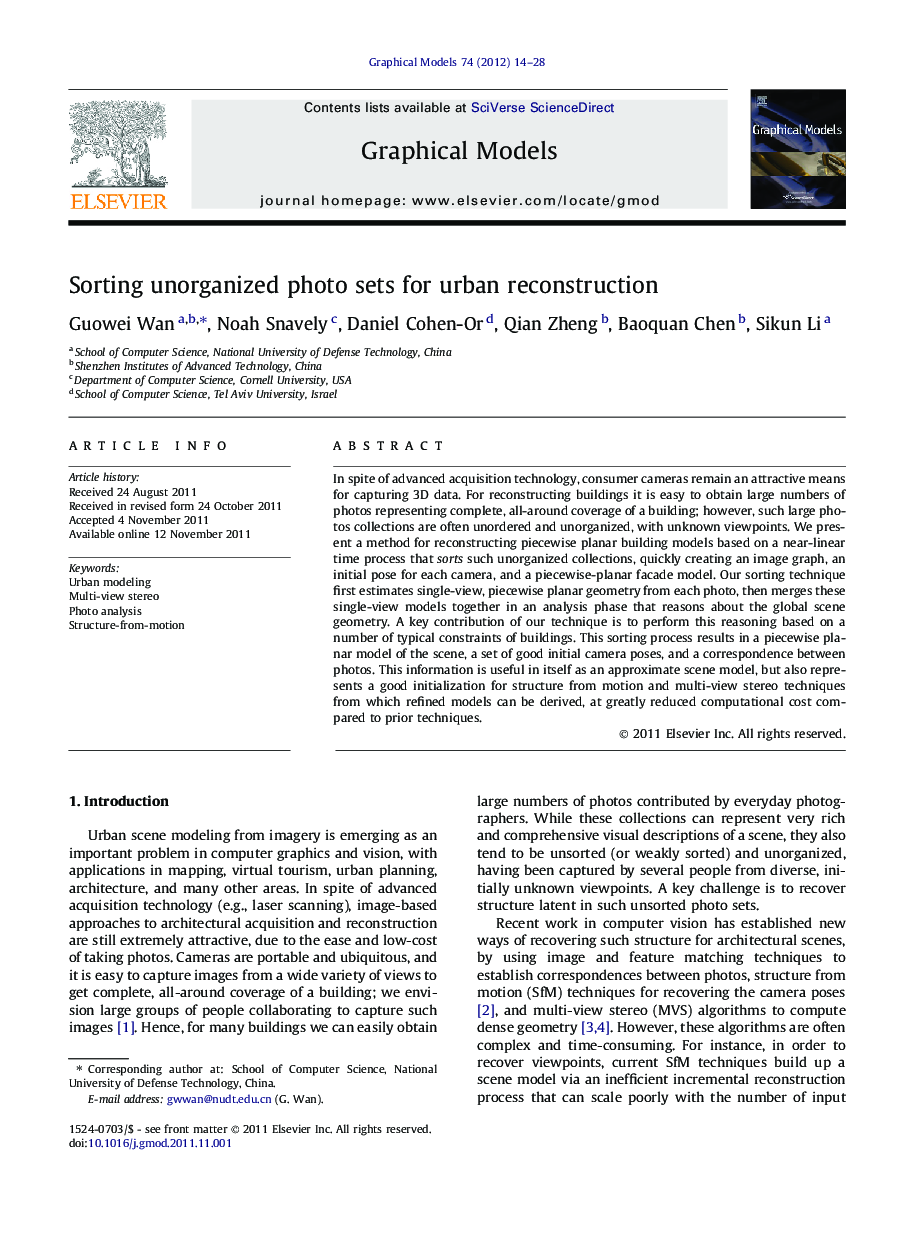| Article ID | Journal | Published Year | Pages | File Type |
|---|---|---|---|---|
| 443049 | Graphical Models | 2012 | 15 Pages |
In spite of advanced acquisition technology, consumer cameras remain an attractive means for capturing 3D data. For reconstructing buildings it is easy to obtain large numbers of photos representing complete, all-around coverage of a building; however, such large photos collections are often unordered and unorganized, with unknown viewpoints. We present a method for reconstructing piecewise planar building models based on a near-linear time process that sorts such unorganized collections, quickly creating an image graph, an initial pose for each camera, and a piecewise-planar facade model. Our sorting technique first estimates single-view, piecewise planar geometry from each photo, then merges these single-view models together in an analysis phase that reasons about the global scene geometry. A key contribution of our technique is to perform this reasoning based on a number of typical constraints of buildings. This sorting process results in a piecewise planar model of the scene, a set of good initial camera poses, and a correspondence between photos. This information is useful in itself as an approximate scene model, but also represents a good initialization for structure from motion and multi-view stereo techniques from which refined models can be derived, at greatly reduced computational cost compared to prior techniques.
Graphical abstractFigure optionsDownload full-size imageDownload as PowerPoint slideHighlights► We compute a piecewise-planar model from unorganized building photos. ► We compute initial camera poses. ► We introduce a “façade graph” to establish facade correspondences across images. ► We accelerate structure-from-motion.
